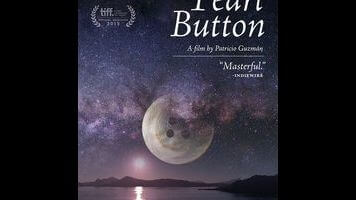Patricio Guzmán’s The Pearl Button meditates on the mystery of water

The nearly 40 years’ worth of documentaries collected in Icarus’ recent DVD box set Five Films By Patricio Guzmán combine to tell two stories. One is about the history of Chile, and how it’s still reckoning with the military coup—and subsequent dictatorship—of General Augusto Pinochet. The other is about the evolution of Guzmán as a filmmaker. He started out as a reporter, shaping raw footage into “direct cinema.” As he transitioned from celluloid to video, Guzmán’s images were initially more functional than artistic. But as digital technology improved—and as the director became more reflective—his movies changed from front-line journalism to something more handsome and allusive. His 2011 essay film Nostalgia For The Light was his real breakthrough, combining stunning pictures with narration that winds easily through history, philosophy, science, and politics. And now the follow-up The Pearl Button does much of the same, with a haunting mediation on water replacing its predecessor’s preoccupation with stars and dirt.
The Pearl Button is a difficult film to describe. It opens with a long look at an ancient block of quartz containing a water droplet, then shifts to gorgeous footage of roiling oceans and forbidding cliffs and beaches. General thoughts on the sea and the rain follow—some analytical, some personal—as Guzmán gradually drifts into stories about the history of human civilization up and down Chile’s long coastlines. When the film needs an interview with an anthropologist or historian, Guzmán includes it. More often he just talks—or lets the images speak for themselves—as he pivots from subject to subject. Inevitably, he brings up genocide, first recounting the loss of indigenous Patagonian culture after the arrival of European colonists, and then delving into the Pinochet administration’s policy of dumping dissidents into the briny deep.
For anyone who’s seen Nostalgia For The Light, The Pearl Button may not seem that revelatory. Guzmán’s making some of the same observations, just with a different starting point, and the subjects he’s touching on aren’t as varied this time out. For a solid half-hour or so, The Pearl Button more or less ceases to be a digressive art project and becomes just a straightforward documentary about the Patagonians, flanking the story of England’s favorite South American “savage,” Jemmy Button. And the film’s framing device—about the search for water and life on other planets—comes off a little forced, especially in contrast to the way Nostalgia For The Light so elegantly used the cosmos as a metaphor for a past that we can see but not interpret.
But any comparative weaknesses in The Pearl Button seem minor when Guzmán is lingering over shots of hail pelting seawater, in the shadow of cobalt-blue icebergs. This film sells some top-shelf eye-candy—and not all of it was gathered on Chile’s chilly southern shores. Just as pretty are Guzmán’s slow camera moves across a room-sized outline of his home country, which captures the unwieldy hugeness of a historically complicated nation. Over his half-century behind a camera and in editing bays, Guzmán has developed a real sense for the different ways that he can convey reality. Sometimes in The Pearl Button, he interviews the surviving natives of a vanishing society. And sometimes he just tells a story about a boyhood friend who had an accident and was washed out to sea. He keeps sifting through all of this seemingly disconnected evidence, looking for answers to questions he’s been asking all his life.